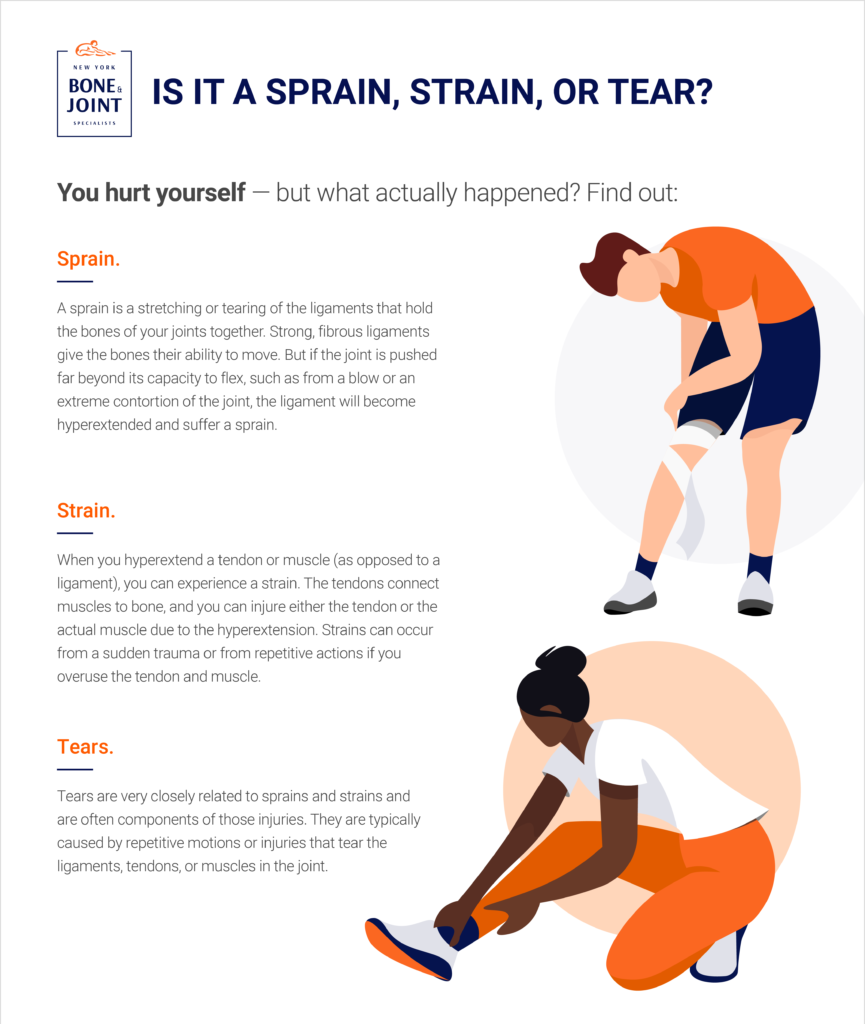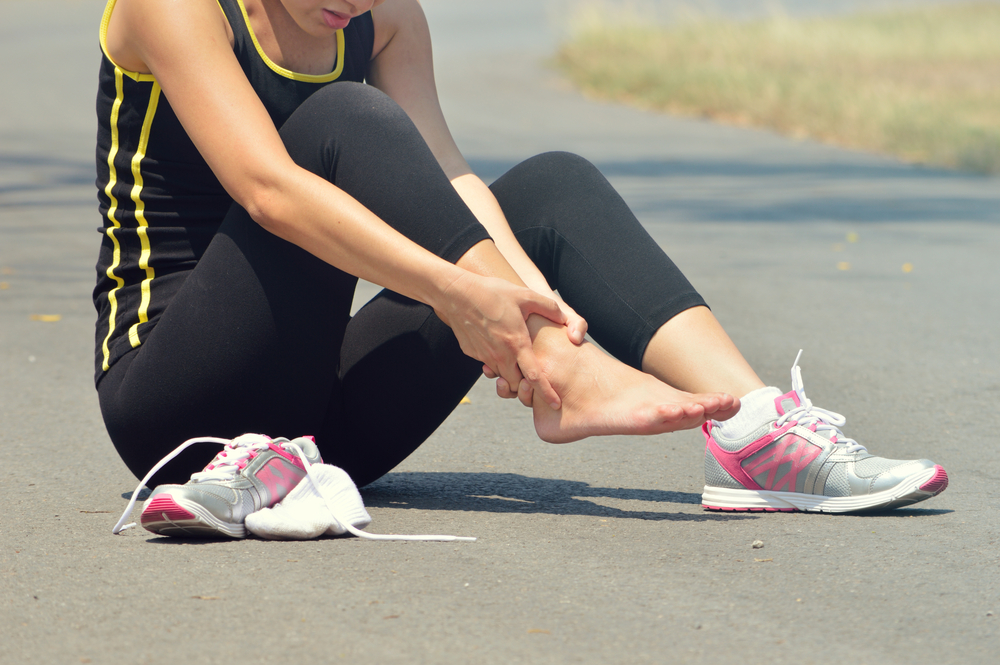Ouch! You hurt your ankle. But is it a sprain, strain, or tear? Here’s how to tell the difference between these similar tendon and ligament injuries — and how to treat them.
The terms sprain, strain, and tear are sometimes used interchangeably to describe an injury to a joint such as the ankle or knee. Although the symptoms for each are quite similar, a sprain, strain, and tear actually refer to different types of traumas and proper treatment and healing depends on knowing which you’ve suffered from.
Luckily, an orthopedist can easily diagnose which condition you’ve suffered so you can take the right steps to get better. Read on to learn more about these three orthopedic injuries and the best treatments for each.

Sprain vs. Strain vs. Tear
Sprains, strains, and tears are common orthopedic injuries. While they are particularly frequent among athletes, anyone can injure their ankle or knee by twisting the joint. Even doing something as simple as walking and not looking where you step can lead to a sprain, strain, or tear. So what’s the difference between these three injuries? Take a look:
Sprain. A sprain is a stretching or tearing of the ligaments that hold the bones of your joints together. Strong, fibrous ligaments give the bones their ability to move. But if the joint is pushed far beyond its capacity to flex, such as from a blow or an extreme contortion of the joint, the ligament will become hyperextended and suffer a sprain. When that happens, you’ll experience pain, swelling, limited mobility, and bruising
Strain. When you hyperextend a tendon or muscle (as opposed to a ligament), you can experience a strain. The tendons connect muscles to bone, and you can injure either the tendon or the actual muscle due to the hyperextension. Strains can occur from a sudden trauma or from repetitive actions if you overuse the tendon and muscle. Signs of a strain include pain, swelling, muscle spasms, and an inability to move the joint. It may also be difficult to put weight on the joint and you may notice a general feeling of looseness in the joint.
Tears. Tears are very closely related to sprains and strains and are often components of those injuries. They are typically caused by repetitive motions or injuries that tear the ligaments, tendons, or muscles in the joint. However, not all tears are the same. A partial tear is one where the ligament, tendon, or muscle suffers a slight tear, but remains mostly intact. A serious tear, on the other hand, is one where the tissue is completely ruptured from the bone. If you’ve suffered a tear, you may hear a popping sound in the joint when you move it.
Treating Sprains, Strains, and Tears
Treatment and recovery depends upon the severity of your injury. In general, mild to moderate sprains, strains, and tears heal on their own in a couple weeks if you follow the RICE method immediately after suffering the injury:
- Rest. Don’t put any pressure on the affected joint for a day or two. For an ankle sprain or strain, you may need crutches for a few days to give it proper rest.
- Ice. Apply a cold compress to the joint for 10 minutes at a time to reduce swelling. Make sure not to apply the ice directly to the skin. Instead, wrap it in a towel.
- Compression. Compression can help tamp down swelling. Try using a compression sleeve or medical bandage to compress the affected joint and restrict movement.
- Elevation. Raise the injured joint on a pillow. This action prevents fluid from building up in the joint and causing swelling.
Beyond the RICE method, over-the-counter non-steroidal anti-inflammatory medications can also be a good way to reduce inflammation and pain.
While it will take more than a few days for your joint to fully heal, the pain and swelling should subside within 72 hours if you follow these steps. If that doesn’t happen, you should see an orthopedist for further evaluation. They can work with you to develop the best course of action. While a complete tear may require surgery to repair, many sprains, strains, and tears won’t require any surgical intervention. In most cases, rest is all you need to heal. From there, you can begin working to regain full use of the joint.
A customized physical therapy program can restore your full range of motion using gentle stretching and strengthening exercises. Although moving the affected joint will be uncomfortable at first, it’s important that you continue with the physical therapy in spite of the pain. Otherwise you run the risk of keeping the joint immobile for too long and creating scar tissue on the ligament or tendon.
At the same time, make sure not to rush your recovery. Go at a moderate, comfortable pace and your sprain, strain, or tear will soon heal. Your orthopedist and physical therapist will work with you to ensure you are comfortable throughout the process.
Heal Your Ligaments & Tendons Today
If you think you may have suffered a sprain, strain, or tear — or any other orthopedic injury — come visit New York Bone & Joint Specialists. Since we focus solely on orthopedic injuries, we have the expertise to help you get better fast. We’ll develop a treatment plan to get your back on your feet again pain-free. Contact us today for a consultation.




